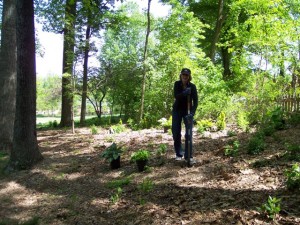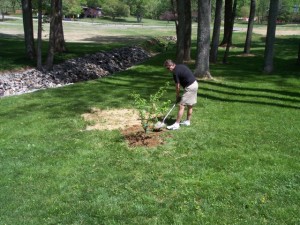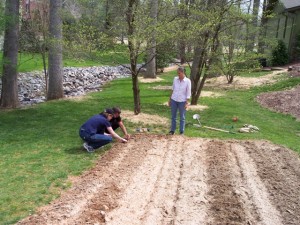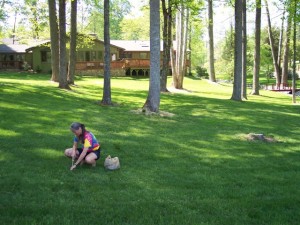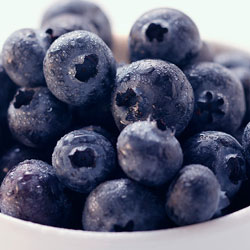 If you don’t have your own garden, like I do.. the second best way to avoid pesticide residue on foods is to buy organic produce — USDA rules prohibit the use of pesticides on any crop with the certified organic label.
If you don’t have your own garden, like I do.. the second best way to avoid pesticide residue on foods is to buy organic produce — USDA rules prohibit the use of pesticides on any crop with the certified organic label.
You can reduce your exposure to pesticides by as much as 80% by avoiding the most contaminated foods in the grocery store.
Here’s a closer look at the “2010 Dirty Dozen”, fruits and veggies that don’t come clean with washing:
1. Celery
Celery has no protective skin, which makes it almost impossible to wash off the chemicals (64 of them!) that are used on crops. Buy organic celery, or choose alternatives like broccoli, radishes, and onions.
2. Peaches
Multiple pesticides (as many as 62 of them) are regularly applied to these delicately skinned fruits in conventional orchards. Can’t find organic? Safer alternatives include watermelon, tangerines, oranges, and grapefruit.
3. Strawberries
If you buy strawberries, especially out of season, they’re most likely imported from countries that have less-stringent regulations for pesticide use. 59 pesticides have been detected in residue on strawberries. Can’t find organic? Safer alternatives include kiwi and pineapples.
4. Apples
Like peaches, apples are typically grown with poisons to kill a variety of pests, from fungi to insects. Tests have found 42 different pesticides as residue on apples. Scrubbing and peeling doesn’t eliminate chemical residue completely, so it’s best to buy organic when it comes to apples. Peeling a fruit or vegetable also strips away many of their beneficial nutrients. Can’t find organic? Safer alternatives include watermelon, bananas, and tangerines.
5. Blueberries
New on the Dirty Dozen list in 2010, blueberries are treated with as many as 52 pesticides, making them one of the dirtiest berries on the market.
6. Nectarines
With 33 different types of pesticides found on nectarines, they rank up there with apples and peaches among the dirtiest tree fruit. Can’t find organic? Safer alternatives include, watermelon, papaya, and mango.
7. Bell peppers
Peppers have thin skins that don’t offer much of a barrier to pesticides. They’re often heavily sprayed with insecticides. (Tests have found 49 different pesticides on sweet bell peppers.) Can’t find organic? Safer alternatives include green peas, broccoli, and cabbage.
8. Spinach
New on the list for 2010, spinach can be laced with as many as 48 different pesticides, making it one of the most contaminated green leafy vegetable.
9. Kale
Traditionally, kale is known as a hardier vegetable that rarely suffers from pests and disease, but it was found to have high amounts of pesticide residue when tested this year. Can’t find organic? Safer alternatives include cabbage, asparagus, and broccoli.
10. Cherries
Even locally grown cherries are not necessarily safe. In fact, in one survey in recent years, cherries grown in the U.S. were found to have three times more pesticide residue then imported cherries. Government testing has found 42 different pesticides on cherries. Can’t find organic? Safer alternatives include raspberries and cranberries.
11. Potatoes
America’s popular spud reappears on the 2010 Dirty Dozen list, after a year hiatus. America’s favorite vegetable can be laced with as many as 37 different pesticides. Can’t find organic? Safer alternatives include eggplant, cabbage, and earthy mushrooms.
12. Grapes
Imported grapes run a much greater risk of contamination than those grown domestically. Only imported grapes make the 2010 Dirty Dozen list. Vineyards can be sprayed with different pesticides during different growth periods of the grape, and no amount of washing or peeling will eliminate contamination because of the grape’s thin skin. Remember, wine is made from grapes, which testing shows can harbor as many as 34 different pesticides. Can’t find organic? Safer alternatives include kiwi and raspberries.
 That, when they begin to grow, you should continue to mound mulch and dirt around the base. Don’t let potatoes see the sun!
That, when they begin to grow, you should continue to mound mulch and dirt around the base. Don’t let potatoes see the sun!

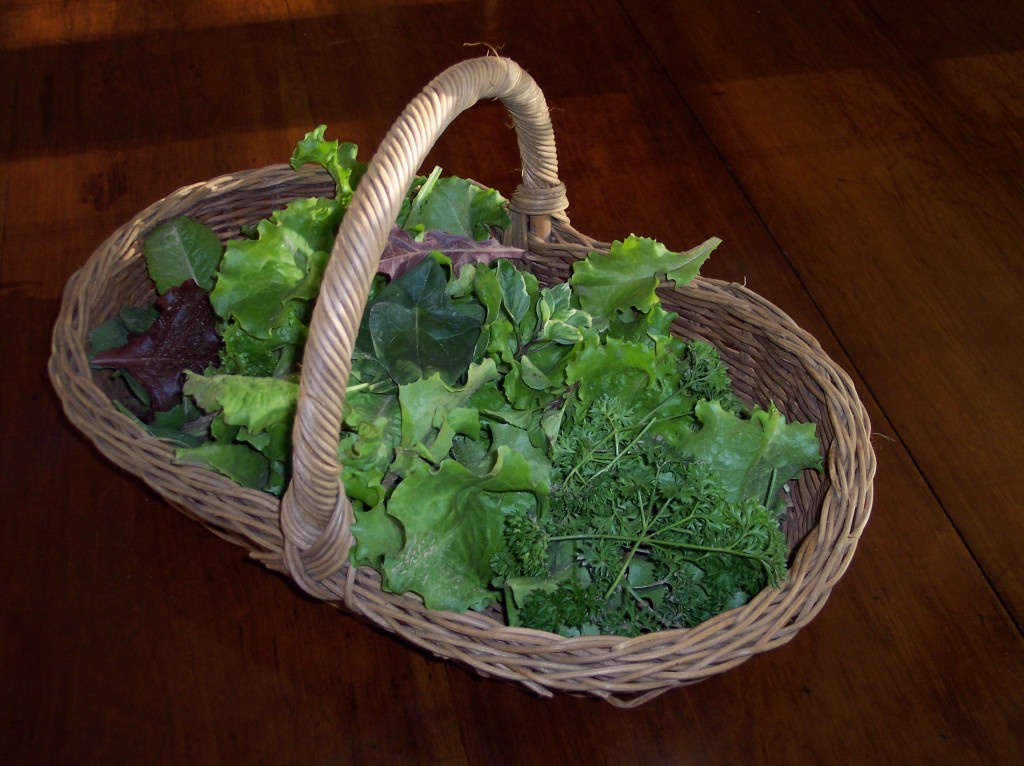
 Basil – basil is not just good in your pasta dish… it is good to keep those pests at bay come summertime. Plant them in small table height planters and watch them be decorative & handy as a repellant. With several different colors and types, it is easy to find basil that fits your theme. These plants grow big pillow-y leaves and smell awesomely herbal.
Basil – basil is not just good in your pasta dish… it is good to keep those pests at bay come summertime. Plant them in small table height planters and watch them be decorative & handy as a repellant. With several different colors and types, it is easy to find basil that fits your theme. These plants grow big pillow-y leaves and smell awesomely herbal. Lemongrass – This cheap easily grown grass is a great deterrent for mosquitoes and can be used for teas and for flavoring on different dishes. You can’t eat your OFF! So this is definitely a plus. Lemongrass is a nice plant to pot and have in corners and as an accent plant to put around the patio.
Lemongrass – This cheap easily grown grass is a great deterrent for mosquitoes and can be used for teas and for flavoring on different dishes. You can’t eat your OFF! So this is definitely a plus. Lemongrass is a nice plant to pot and have in corners and as an accent plant to put around the patio.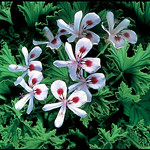 Citronella Plant/Grass – We have all burned the candles, why not grow the plant? Look around, they now have the “Mosquito Plants” for sale that are a form of citronella. This is the natural version pictured to the left, however there are a few variations sold as citronella.
Citronella Plant/Grass – We have all burned the candles, why not grow the plant? Look around, they now have the “Mosquito Plants” for sale that are a form of citronella. This is the natural version pictured to the left, however there are a few variations sold as citronella. Rosemary – Everyone has used rosemary at one time or another in the kitchen, but to repel mosquitoes… This handy herb can put some zing in a pork chop and take the sting out of the summer by running of mosquitoes. Not only that, it looks great while doing it! See the picture to the right and you will notice some rosemary trimmed into decorative bushes.
Rosemary – Everyone has used rosemary at one time or another in the kitchen, but to repel mosquitoes… This handy herb can put some zing in a pork chop and take the sting out of the summer by running of mosquitoes. Not only that, it looks great while doing it! See the picture to the right and you will notice some rosemary trimmed into decorative bushes.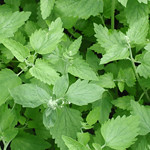 Catnip – It isn’t just for cat toys anymore. This plant, we are finding out… is more powerful at repelling mosquitoes than DEET! Be sure to plant some in and around your patio or pool area to keep those biting bugs away. Of course if you keep some of this handy and dry it out, you can give it to your kitties when you need to occupy them for about a MILLION HOURS!
Catnip – It isn’t just for cat toys anymore. This plant, we are finding out… is more powerful at repelling mosquitoes than DEET! Be sure to plant some in and around your patio or pool area to keep those biting bugs away. Of course if you keep some of this handy and dry it out, you can give it to your kitties when you need to occupy them for about a MILLION HOURS! Marigolds – These plants have a smell that tends to chase off anyone and anything for that matter. Used to keep some bugs away from gardens, this flower will do the same for your mosquito problem. Plant them around and enjoy their blooms as well. They look beautiful in pots, so stick these in corners and around your patio for a hint of color.
Marigolds – These plants have a smell that tends to chase off anyone and anything for that matter. Used to keep some bugs away from gardens, this flower will do the same for your mosquito problem. Plant them around and enjoy their blooms as well. They look beautiful in pots, so stick these in corners and around your patio for a hint of color. Garlic – Garlic has been used to repel tons of varieties of pests for years, so it is no surprise that it ends up on our list. This plant is not only useful to keep those stingers at bay… but you can also pop it out of the ground, let it dry and use it in the kitchen! Garlic is a great companion plant for some problem plants, so check to see where you can grow this to not only benefit your patio area or backyard, but also to benefit your other plants!
Garlic – Garlic has been used to repel tons of varieties of pests for years, so it is no surprise that it ends up on our list. This plant is not only useful to keep those stingers at bay… but you can also pop it out of the ground, let it dry and use it in the kitchen! Garlic is a great companion plant for some problem plants, so check to see where you can grow this to not only benefit your patio area or backyard, but also to benefit your other plants! Tansies – These flowers, often called “mums” are beautiful to spread around a patio or garden area – but not only do they provide color (pink, yellow, red just to name a few); these guys will keep you from slapping yourself all weekend while at the pool. Use tansies here and there to add color to your patio area. Remember you can use these in vases when they are in bloom to spruce up your house as well.
Tansies – These flowers, often called “mums” are beautiful to spread around a patio or garden area – but not only do they provide color (pink, yellow, red just to name a few); these guys will keep you from slapping yourself all weekend while at the pool. Use tansies here and there to add color to your patio area. Remember you can use these in vases when they are in bloom to spruce up your house as well.

